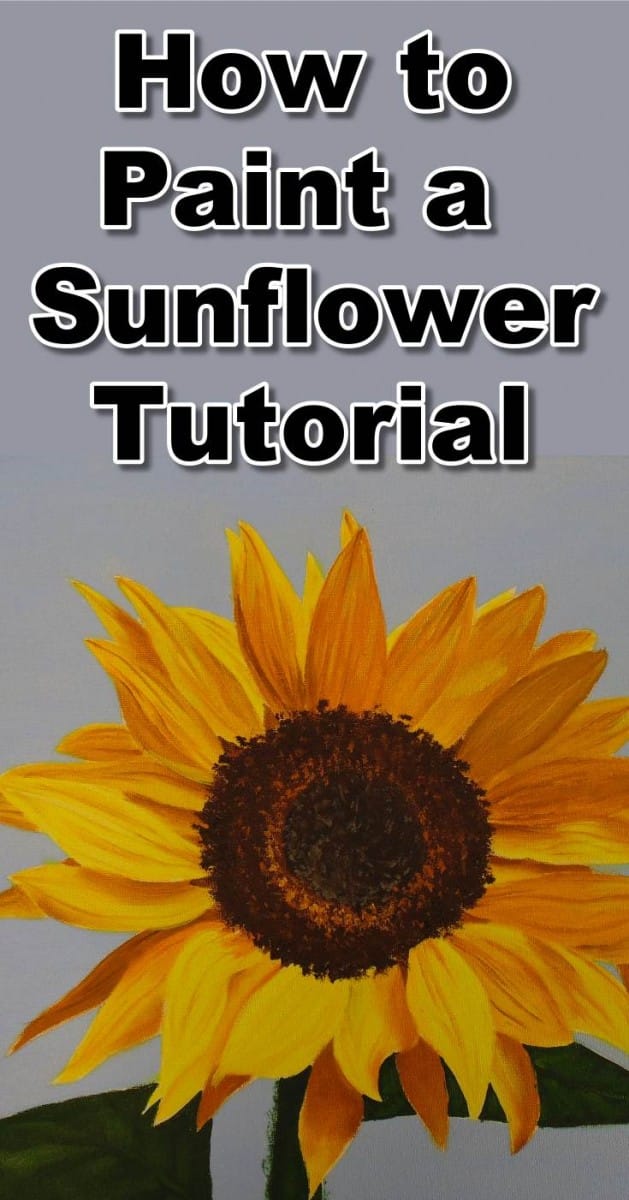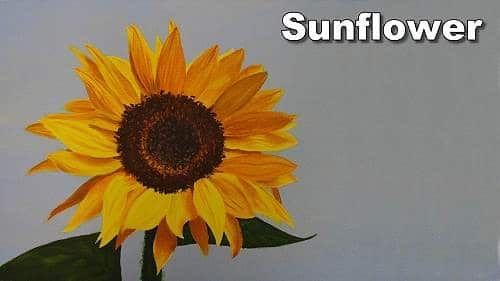Short Class Video
Class Tutorial
Paint the background
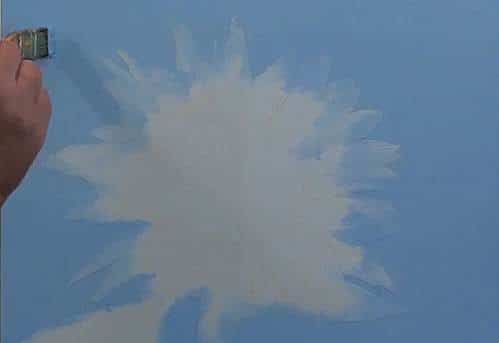
I start off by drawing the silhouette of the sunflower and masking it off using clear cover.
This allows me to quickly paint the background while maintaining perfect edges around the sunflower.
For the background I use Cerulean Blue and Titanium White and a criss-cross stroke to ensure I cover the weave of the canvas.
Once blocked in however I smooth the paint with light horizontal strokes across the entire canvas to give the sky a smooth look.
I then remove the mask. Can you see how beautiful and crisp my edges are because of the mask?
If you have time I recommend leaving the painting to dry as that will avoid accidentally getting any sky colour into your sunflower area.
Paint the basic shape of the petals
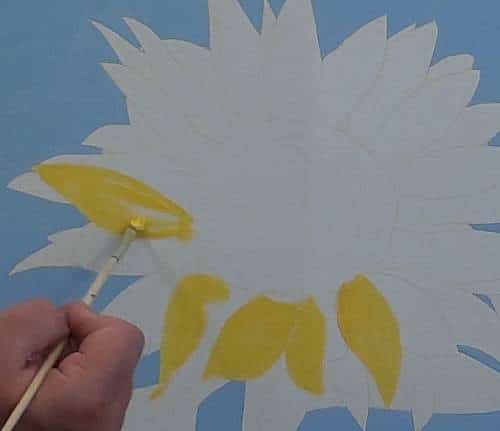
As you can see the sunflower has a ton of petals so you need to be patient when painting them.
I like to paint them in a two step process.
I first paint the basic shapes and shading of each petal and then return to paint the details.
When painting the shadings and shapes of each petal, I am looking for the basic colour of the petal first.
You find this by looking at the overall colour of the petal while ignoring the details.
If you have trouble doing this then look at your reference photo by squinting your eyes so that you are looking through your eyelashes.
This has the effect of flattening out the detail so you can only see the basic shape and shading.
Paint the tonal values of the petals
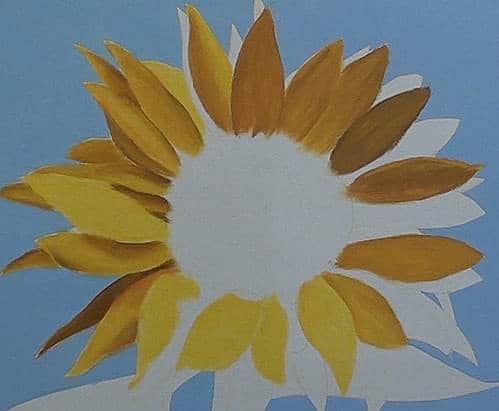
The colours I’ve used for my petals are Cadmium Yellow, Cadmium Orange, Titanium White and Raw Umber.
Once you have blocked in the basic colours of the petal then add shadings to indicate it’s curve.
As you move from one petal to the next you are also trying to indicate that there is distance between them.
You show this in three ways.
The first and most important is the change in colour and tonal value between adjacent to petals.
This contrast and colour change is often very subtle so you will have to look very carefully to spot it. I will often use my artist licence to add a small amount of contrast where I see none.
The second way you indicate the separation is to ensure that the edge of each petal is a nice and crisp found a line.
A found line always indicates distance or a change in angle.
The third method is to paint in the shadows cast by the one petal onto the other.
A shadow always indicates height and provides the Illusion of depth that you need to make your painting look three dimensional.
A fabulous place to show distance between the petals is by painting the really dark contrast in the triangular shaped gaps between the petals where they meet the centre of the flower.
Once all the basic shadings are complete you can either leave the painting to dry or carefully continue.
If you leave the painting to dry you will be able to get very fine detail into each petal later.
If, like me, you decide to continue and paint Alla Prima then you will end with a more impressionistic style painting.
To add detail to the petals I use contrasting tonal values. I will use a lighter paint on a dark petal and dark paint on a light petal.
The detail is added using a soft filbert brush and a quick slashing motion.
When adding the details don’t just and a bunch of random stripes onto the petal. Look at the petal and note in which direction the strokes must go.
The directions indicate the shape of the petals so by curving the lines you can even show that a petal curls over.
You must also look out for areas on the petal where the stripes are more prominent and add more prominent stripes in that area.
Remember that each stripe you add is a wrinkle on the petal so by loading less or more paint onto your brush you can create the illusion of deeper or shallower wrinkles.
Paint the center part of the sunflower
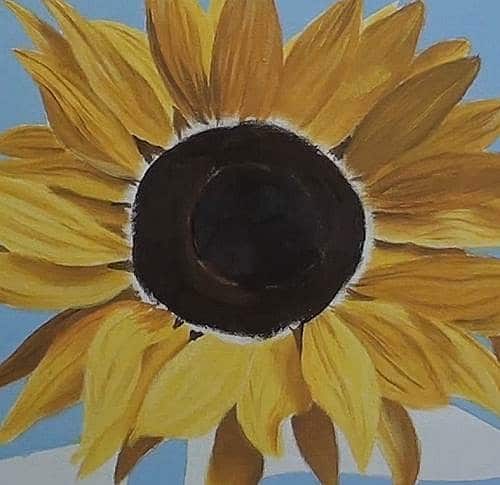
I block in the central seed area with the mixture of Raw Amber, Cadmium Orange and French Ultramarine. This gives me a warm, but almost black, brown.
Notice how I leave a tiny amount of canvas visible where the central area meets the outer ring.
Adding texture to the center piece of the sunflower
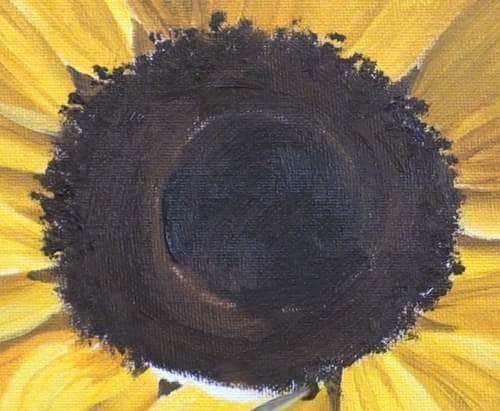
The outer ring has a fluffy texture so to indicate the fluff that is overlapping the petals, I use the oldest worn out brush that I can find. I load the brush with heaps of paint and then tap around the edge. I do this in as random a fashion as possible until the exposed canvas is covered.
The more flared out the hairs on your brush are, and the lighter the touch you use to paint of these marks, the better the effect will be.
Painting the impression of seeds
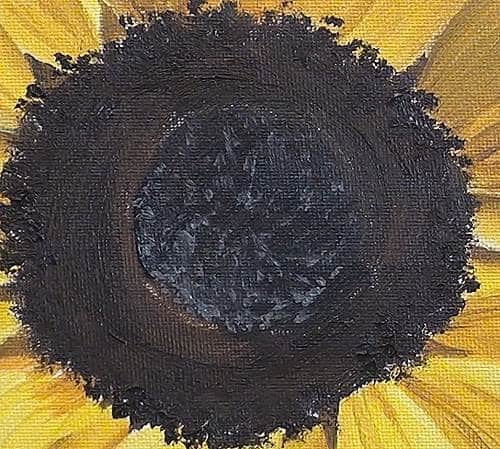
The inside area actually forms a pattern, but unless you are painting on a very large canvas it is not worth trying to recreate this pattern. When you stand back this pattern will simply disappear on a small canvas so you will have wasted your time.
Instead we will rather just create a concave look and suggest the seeds.
To do this I use a fineliner with white paint added to the brown mixture and paint in random dots.
In this scene the sun is coming from the top right towards the bottom left, so to create a concave effect I add less dots to the top right and more towards the bottom left.
For the outer ring I use the same worn out brush as before and paint in the same light random dabbing motion.
The only difference is that I have added Yellow Ochre to the mixture in order to get the colour correct.
Paint the leaves and stem
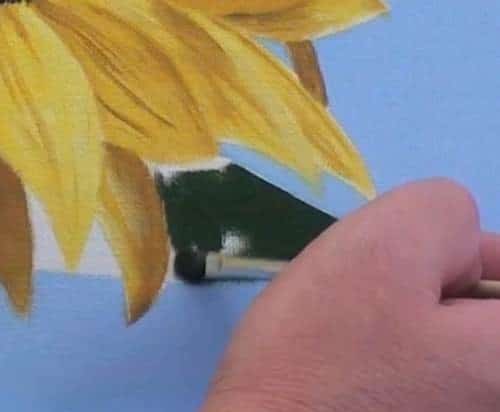
I block the leaves and stem in using Sap Green with French Ultramarine and a touch of Alizarin Crimson added to create a dark green.
I then suggest some of the leaf detail using neat Sap Green.
The stem also has a fluffy look so I load very little paint onto the brush and add a few random and light dabs to create this transparent fluffy look to the edges of the stem. With that our painting is complete.
Final painting
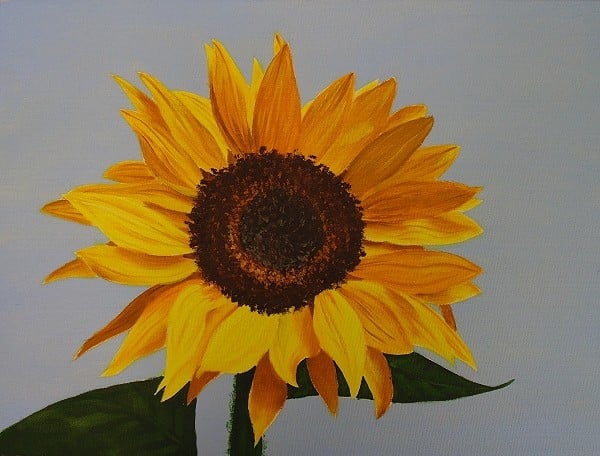
Click the button below to view the real time follow along version of this class:
Pin Me
